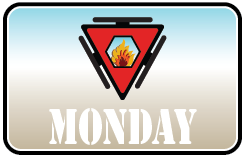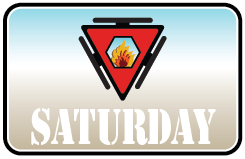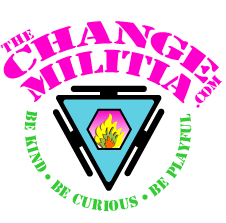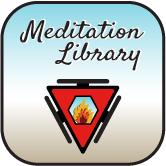Layer Three, Week Two – Sunday
- Watch Videos and Read Instructions Spiral Hips and Tolerate, Can’t Tolerate
- Read Layer Three, Week Two Concepts
- Practice Tolerate, Can’t Tolerate
As you find yourself distracted, feel how completely you immerse yourself in them. When you check Facebook, are you aware of anything else? When you check the weather for the third time (I am guilty of this), can you hear the birds sing? Catch yourself, and begin to understand the all-consuming nature of distractions.
The last of last week’s concepts dealt with examining your beliefs. How did you do? How many have you examined? If not, why not?
Beliefs are what you anchor your habits to. Beliefs become a constant reconfirmation of the images you hold about what is possible and impossible. Look to the heart of every always and never, your absolutes, and you will find a belief that limits you.
All beliefs are limiting. They have to be. Beliefs give a framework, a box, that delineates what is inside and what is outside. Either things fit into your belief or they don’t. Everything that doesn’t is given a limited or negative value. Options and opportunities outside of your beliefs become either improbable or inconceivable. They are discounted. And similarly, things that fall within your beliefs are given priority without current merit (based on past experience or your predisposition).
Beliefs make you lean in habitual directions. They keep you from being balanced, limit your productivity and efficiency.
You decide what you believe, right?! Do you accept that it is your right to self-determine your beliefs? Have you allowed yourself that authority? Does it feel like a right or an obligation? Does it feel like work or freedom?
Accepting and allowing that you have the right to determine what and how you believe is the first step toward self-responsibility and self-determination.

Layer Three, Week Two – Monday
- Morning – Practice Tolerate, Can’t Tolerate
- Evening – Read Layer Three, Week Two Monday Concepts
- Evening – Practice Spiral Hips
How often do you let yourself get absorbed in someone else’s conversation? Get an abacus and record the number of times you look at your phone, email, or social media. As you sling the beads ask yourself how important, consequential, essential, influential, or significant the distraction was. Play with it, be lighthearted and curious. Be discerning; how much actual value do distractions add to your life?
Personal responsibility is your ability to decide and capability to respond. Does personal responsibility feel like work or freedom of choice? When you take personal responsibility you empower yourself, stop blaming others, and unlimit your opportunities. Personal responsibility keeps you from making demands and having expectations of others.
The primary entryway into personal responsibility is self-evaluation. The first two layers of the program gave you some flavors of that. This layer will build on that foundation.
Your sub-conscious mind constantly self-evaluates but rarely makes that information conscious. It makes a determination of possible threats and then whispers the associated fears into your head. What you will be playing with in this layer and the next is learning how to make those evaluations a conscious habit.

Layer Three, Week Two – Tuesday
- Morning – Practice Tolerate, Can’t Tolerate
- Evening – Read Layer Three, Week Two Tuesday Concepts
- Evening – Practice Spiral Hips
As you track your distractions today, feel how much of your energy they are burning. When you catch yourself in distraction, calculate how much mental, emotional, or physical energy you have spent. Contemplate what you could have accomplished if you hadn’t allowed yourself to be distracted.
Making your evaluations conscious starts with a decision. You have to want to. If you aren’t committed, your subconscious mind will continue to make the evaluations. Subconscious evaluations almost always lead to habitual reactions. Habitual reactions are rarely the most productive, efficient, or beneficial. And habitual reactions almost never bring about beneficial change.
Evaluating your world and your life can be scary. It can feel daunting. To take this on requires a clear intention, a defined trajectory, and the will and determination to challenge yourself. To succeed, celebrate every success, rejuvenate joyfully, and move dynamically.

Layer Three, Week Two – Wednesday
- Morning – Practice Tolerate, Can’t Tolerate
- Evening – Read Layer Three, Week Two Wednesday Concepts
- Evening – Practice Spiral Hips
See if you can discern when your subconscious mind is trying to add importance to increase imbalance. What stories does your mind tell you about how relevant, pertinent, and critical the distraction is? How does your mind try to convince you to feel more strongly about the distraction?
The degree to which you are able to consciously evaluate the input from your body, mind, emotions, and environment is the degree to which you are present in the moment. If you are distracted, your subconscious mind will make the decisions.
Distractions will fall into three major categories, internal, external, and relational. Internal distractions will include your thoughts, feelings, and sensations, (gross and subtle). External distractions will include everything outside of your skin: people, circumstances, the environment, and things like social media (things that exist but don’t intrude on their own). Relational distractions are ones that transit from internal to external or external to internal.

Layer Three, Week Two – Thursday
- Morning – Practice Tolerate, Can’t Tolerate
- Evening – Read Layer Three, Week Two Thursday Concepts
- Evening – Practice Spiral Hips
Feel into your energy when you find yourself distracted. Feel your mental body, your emotional body, your physical body and your levels of energy. Can you feel the imbalance? See if you can identify where you are out of balance. What feels over-charged or undercharged? Spend the day feeling for imbalances.
Internal distractions will primarily be mental. You have tens of thousands of thoughts a day, all vying for your attention. One thought creates a cascade of other thoughts. Thoughts are one of the things that generate emotions.
Every emotion is a distraction. When you have an emotion (label a group of sensations), you prioritize those sensations over every other sensation. Emotions have a preset value range. That preset value range is the level of distraction. When you label yourself as sad, you allow all of the thoughts and feelings that go with it to take center stage. Sad is a distraction. I’m not judging sad, saying you should be sad or not be sad, but just helping you to some of the collateral energy consequences. When you know your emotions are distractions, you can ask yourself if you are emotional because you want to be distracted.
Internal physical distractions include aches, pains, bodily processes, and all physical labels like tight, numb, tingling, sore, etc. You become aware of the physical sensation and allow yourself to think about it. The more you think about your physical sensations; the less present your are to your motivations and intentions.

Layer Three, Week Two – Friday
- Morning – Practice Tolerate, Can’t Tolerate
- Evening – Read Layer Three, Week Two Friday Concepts
- Evening – Practice Spiral Hips
Take several of your distractions and see if you can forensically examine them. What was your energetic configuration before the distraction? What was the nature of the distraction? What value did you give it? How did it increase your imbalance?
External distractions are the things you choose to give your attention to outside of yourself. Squirrels are a good example, as are bright and shiny objects, clouds, dust motes, reflected light, etc. Certain colors, shapes, car models, bikini models, or anything that reduces your presence by pulling your attention away from what you are doing. The key here is that these are non-invasive; you choose to be distracted. How much of the squirrel video that I linked above did you watch?
External distractions can instigate internal distractions. You see and/or hear a couple having an argument and it brings about a visceral response in your body. You give their argument value and that starts a cascade of mental, emotional, and physical responses in your body which overrides the external distraction and brings the distraction from external to internal.

Layer Three, Week Two – Saturday
- Morning – Practice Tolerate, Can’t Tolerate
- Evening – Read Layer Three, Week Two Saturday Concepts
- Evening – Practice Spiral Hips
When you find yourself distracted feel how hard it is to let go and get back to what you were doing. Feel for the difference between the pull to remain and the resistance to leave. The pull to remain will probably have a feeling of comfort and familiarity. The resistance to leave will have a quality of apprehension and anxiety. Neophobia is the fear of anything new; the unwillingness to try new things, break from routine, or to accept that the Matrix is real.
Relational distractions include when someone grabs your arm, calls your name, creates a scene, or something diverts your attention by projecting energy into your space. Getting into a hot car is an example. You get in and the trapped heat saturates you. Sounds and smells intrude upon your focus. Heavy emotional energies like rage and grief penetrate and are extremely difficult to not be affected by. All conversations and personal interactions are relational distractions. Every touch, breath, and movement brings you into some sort of communion with your environment.
Distractions are not necessarily bad. Hopefully, what you have found with the Daily Focus exercises is how the value you give your distractions is what is critical. To what degree are you being distracted, at what critical time are you allowing the distraction, and how is your distraction limiting your effectiveness, happiness, and fulfillment?
Step 1 – Get on all fours with your knees cushioned.
Step 2 – Tuck your toes under so that your toes are bending back (toward the top of your feet).
Step 3 – Take a Current30 and then relax all of the non-targeted tissues. Take a few deep breaths.
Step 4 – Begin to add pressure to your bent toes by shifting your hips backwards and bringing your weight over your toes.
Step 4 – Continue to add weight feeling the transition from tolerable to intolerable.
Step 5 – When the pressure is more than you can tolerate, shift your weight off your toes back to a place of tolerance.
Step 6 – Re-center your energy by relaxing your physical body, quieting your mind, and calming your emotions. Take a few deep breaths.
Step 7 – Repeat. With each repetition, try to increase your awareness of the transition cycle both from tolerable to intolerable and from intolerable to tolerable.
Why it Matters – This movement explores a hard edge. Hard edges are places that you believe are intolerable. What you will find is that your tolerance is actually fluid. Depending on the balance in our bodies (physical, mental, emotional, and subtle), your range in this movement will feel very different. If you are completely stressed out, it will change your perception of this movement. The greater your level of balance, the more tolerance you will have. As you increase your tolerance, you increase your capacity, and your level of capability. Challenging the hard edges in your life from a place of balance, relaxation, and fluidity will bring about substantive change.
Everyday Usability – Every day there will probably be dozens of times you move out of something that feels intolerable by compensating. You fall into an existing pattern to limit the amount of energy in your system. Feeling the transitions as they happen will give you in the moment cues and reminders to stay balanced.
Progression – The next stages of this movement will include feeling the intolerance in each side of the Square Breath, allowing opposing emotions to percolate (find something to be joyful for as you tolerate the discomfort), and longer hold times. Mentally, you increase your tolerance levels by being curious. Where exactly does it feel intolerable? What is your fear? What dire consequences are you afraid of?
Step 1 – Take a gentle lunge, hips shoulder-width apart, front foot inline with forward leg, back foot at a 45 degree angle with the heel of the back foot inline with the inner edge of the front foot.
Step 2 – Bend the front leg so that the knee is over the ankle and keep the back leg straight.
Step 3 – Begin to open and close the hips, shoulder down, front knee over ankle, and limiting spinal rotation (upper body twist).
Step 4 – Explore your range of motion, limit your compensations and remember to breathe.
Step 5 – Repeat on the other side.
Step 6 – Add complexity by making circles in both directions with your tailbone as you open and close your hips. Shorten your stance if necessary.
Step 7 – Repeat on the other side.
Step 8 – As you focus on the movement bring additional awareness to physical compensations, mental story creation, and emotional configurations.
Why it Matters – Increasing complexity is a great way to increase focus … and to feel when staying focused is a challenge. As you can increase the complexity of what you are doing, as you stay focused and relaxed, you maximize your presence, productivity, and efficiency. An overwhelming majority of people hold vast quantities of tension in their hips; this movement will increase the range of motion and release held tension.
Everyday Usability – Practicing increasingly complex movements while maintaining relaxation, balance, and fluidity will make everything feel easier. When you can be present and relaxed regardless of the challenge; you greatly increase your options and your ability to identify opportunities.
Progression – As you get familiar with this movement, you can add complexity by closing your eyes and/or doing the entire movement in each side of the square breath. You can also try doing this in socks on a slippery surface.











